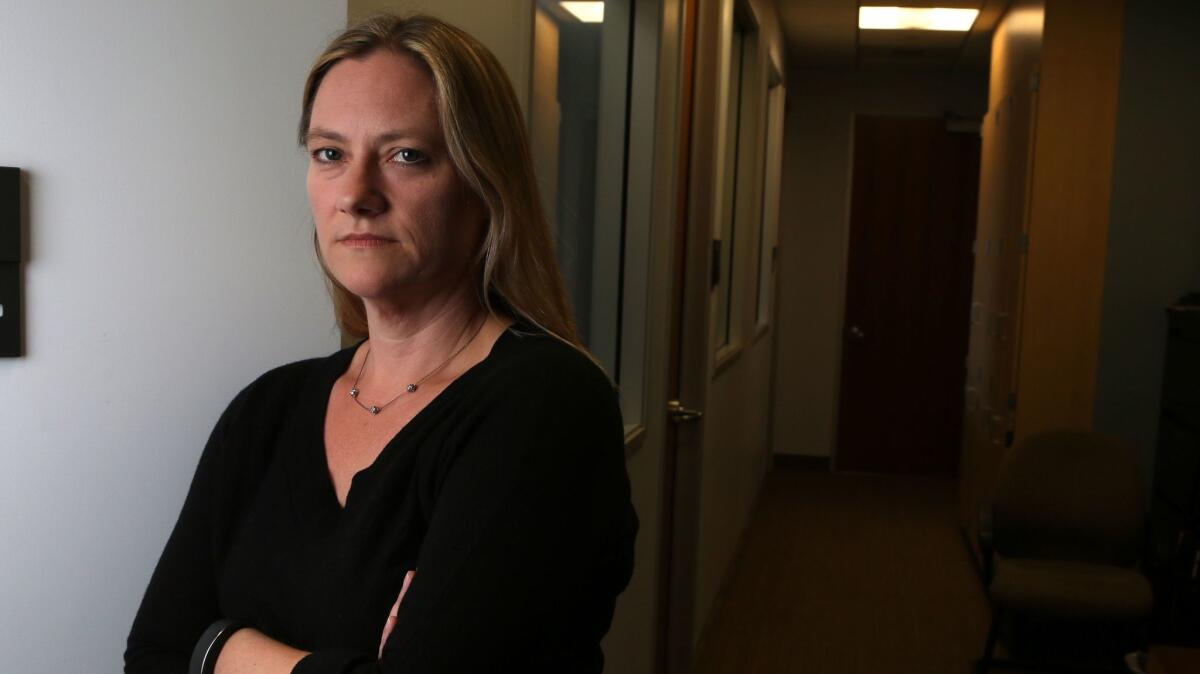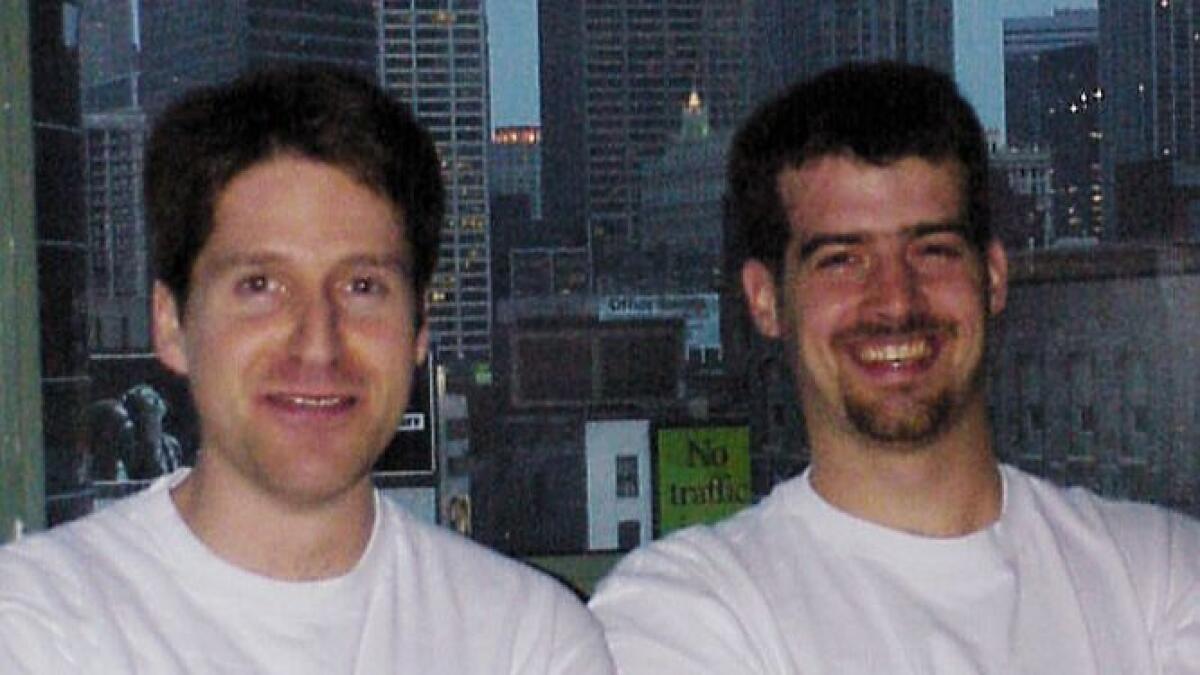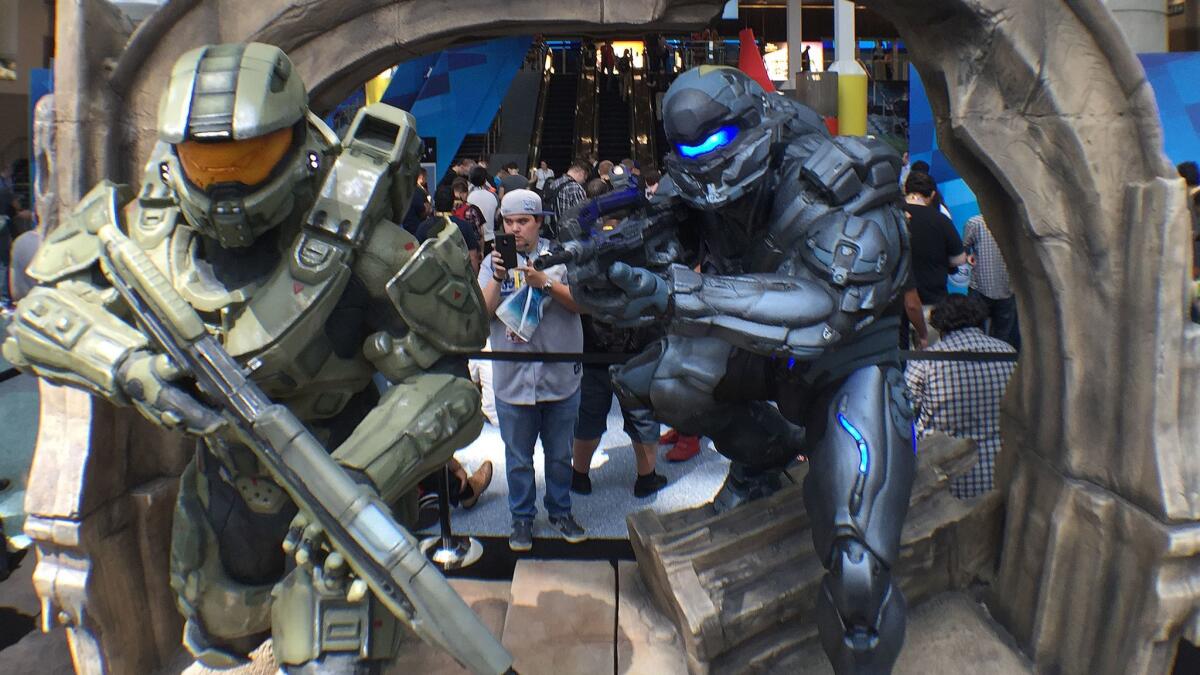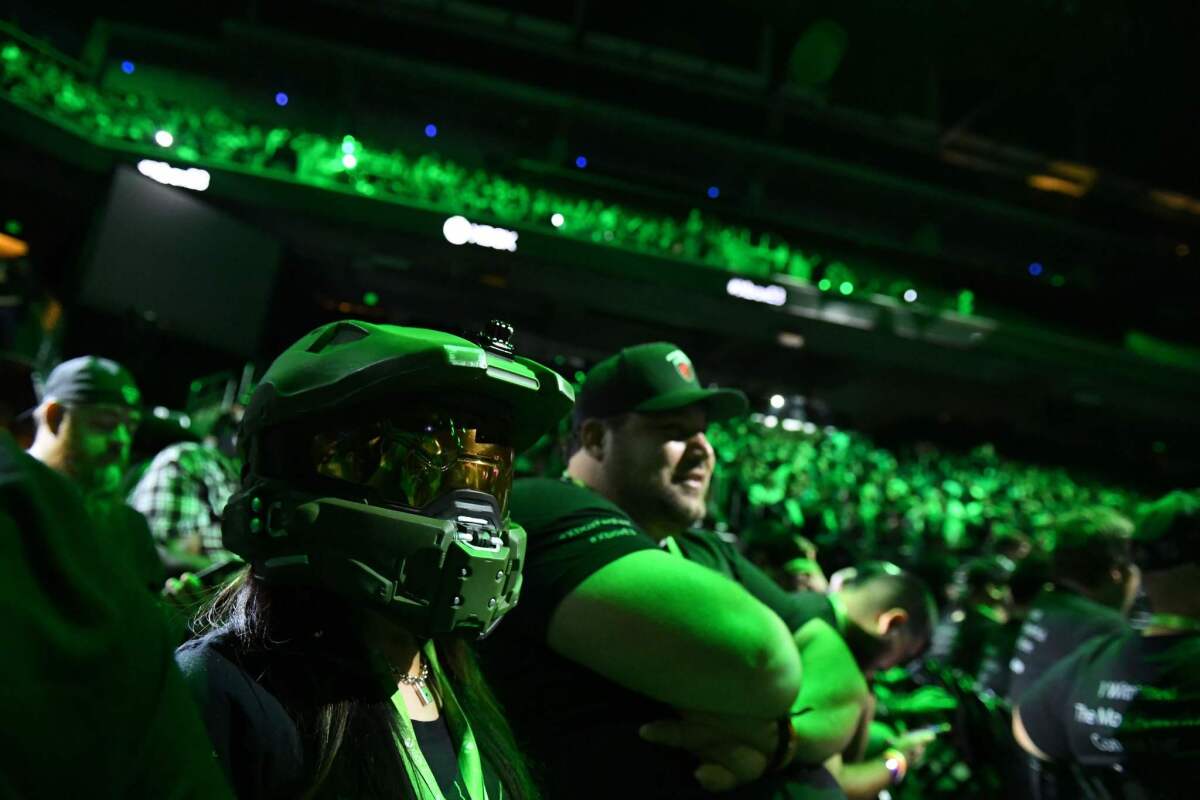Why this UCLA professor thinks she inspired the video game ‘Halo’

A brief friendship that began with an online chat and an awkward date may have inspired one of the world’s best-selling video games.
For two decades, UCLA associate professor of pediatrics Patricia Dickson remembered nothing of her college flirtation with
Jones acknowledges his long-in-the-past relationship with Dickson, but denies her assertion that she served as his muse. Through a spokesperson for Santa Monica’s
That leaves fans of the 16-year-old line of games, books and videos to decide whether to take Dickson, 44, at her word and where to fit her account in “Halo” lore. She says she's not seeking anything from Jones, who most recently has worked on the game “Destiny.” But in telling her story publicly for the first time, she wants to call attention to dissociative amnesia, a disorder she says erased specific memories and left her feeling unfulfilled after a falling-out with Jones.
“There’s people who think repressed memories aren’t a real thing,” Dickson said. “I have a real concrete example, and I feel like I should say something.”
Dickson and Jones both had just been dumped when the University of Chicago students connected online in January 1992. They bonded over their shared interest in Greek mythology. Her username was Ariadne, the overseer of the Labyrinth who helped Theseus defeat Minotaur; he had been working on the Macintosh computer game “Minotaur: The Labyrinths of Crete.”

Jones, a 20-year-old junior, asked Dickson, an 18-year-old freshman, on a date to the on-campus theater, where they saw the art house flick “My Own Private Idaho.” Dickson saw potential for more dates; Jones wanted friendship.
They kept hanging out. When she told him she had been sexually abused as a child, Jones replied that he wanted to hurt the guy. She saw Jones as a protector, even if he wasn’t her boyfriend.
He read her journal and probed with increasingly deeper questions.
“He wanted to know everything about me,” Dickson said.
A friend even warned her that Jones might simply be using her for ideas. But she kept going along.
Those conversations must have been pivotal for him, she surmises. She can list things she said and things she showed him that appear in the "Halo” universe. Many aren’t unique, yet taken together, she sees a pattern.

Though Dickson has never played “Halo,” she gleaned information watching YouTube gameplay clips and reading four associated novels. Jones and colleagues provided a few seeds for the books. (Lead author Eric Nylund said the attributes of the Halsey character were “made up.”)
In college, Dickson thought Jones was doing homework when he revealed alien drawings one day and asked her to explain why the creatures would attack Earth. He regarded her reply of “food” unsatisfactory.
“‘I need something. Come on Patti,’” she recalls him saying. “The only thing I could think of was a teacher in my school said organized religion was the reason for bad things in the world, so I said organized religion.”
He hugged her. In the game, a religiously driven band of extraterrestrials wipes through humanity.
Halsey serves as engineer for the human fighters in the game. Her name — found in
The connections went on:
- Her: Messy dorm desk with cold cups of coffee. Halsey: Days-old coffee on a desk scattered with papers.
- Her: Snow globe of New York City on the desk and a Matterhorn-shaped piggy bank on a friend’s desk. Halsey: A snow globe of the Matterhorn.
- Her: Gave him a Rachmaninoff classical music tape. Halsey: Listens to the same concerto.
- Her: Favorite numbers were 7 and 11. Halsey: Assists the main character, Master Chief John 11-7. (Jones said 7-11 reminds too much of the store, Dickson recalled.)
- Her: Favorite goddess is Athena, born from the head of Zeus. Halsey: Gives birth from her brain to Cortana.
- Her: Atheist raised in private school who considered herself more intelligent than her parents. Halsey: Atheist, went to elite academy and smarter than her parents.
Dickson forgot about the late-night chats in the dorm that spring for 23 years.
By the fall of 1992, they had grown estranged as Jones showed romantic interest in a different woman. Their last connection came in the quad. It was there, in a conversation he started with “You look good,” that she now remembers Jones saying that he shaped two key video game characters in her image.
“I felt used,” she said. “I said stop talking about the video game — I want to hear about whether you want to date me. I was totally confused.”
Dickson remembers him pleading with her to stay with him, that he needed his muse.
“He was willing to — I don’t know what — to get me to help him with his game,” she said. “I shut down at that point and had a panic attack. I just left.”
He was someone she saw as a hero; someone she expected to stand up for her. She felt used.
The end of their friendship was so traumatic to her that she said she compartmentalized it — forgetting all those details until she returned to campus in 2015.
Her grandfather had died that spring and her passion for science had fizzled. All this sat on her mind. But passing her old dorm, she felt compelled to Google “Halo” as soon as she got home.

It’s not as if she didn’t know “Halo” was a big game, or that she forgot knowing its creator. Around 2004, she congratulated Jones on his success in a letter.
But her apparent ties to the game didn’t surface in her thoughts until going through therapy last year.
She learned that the psychological toll from childhood abuse had gone unhealed. Suffering betrayal and severely adverse childhood experiences are associated with unrealized gaps in memory, said Dr. Richard J. Loewenstein, medical director at
“When you’re missing these important memories, it takes away your sense of self,” he said. “It causes people to feel they are governed by things inside them that they are not in touch with. It may affect their relationships or cause addictions.”
Splitting with Jones, Dickson says, triggered indefinite amnesia of key personal events, which is an issue common among soldiers and others thrust into stressful situations.
“The therapy is helping me push through emotions instead of pushing them aside,” Dickson said. “Being able to share my story is a way to put the pieces back together.”
She contacted old acquaintances from college, including Emese Kalnoki, who gave credence to her story. Kalnoki said she would often hang with cowboy-boot-wearing Jones and other “nerdy friends” at Garbage Pizza. And she recalls Jones dedicating a game to her and Dickson.
Jones hasn’t replied to two additional letters that Dickson mailed to Jones’ office in the last 18 months. But in hindsight she says she harbors no ill will.
“I don’t think that he treated with me anything other than complete respect,” said Dickson, who researches rare diseases as chief of medical genetics at Harbor-UCLA’s pediatrics department. “It’s a beautiful idea that ‘Halo’ happened because a boy wanted to protect a girl.”
Twitter: @peard33
ALSO
Santa Monica couple fights Snapchat over 'geofilter' trademark
Video-game-loving millennials, theme parks are making these attractions just for you
Historical accuracy, not a diversity push, brought 'Battlefield' playable female characters




